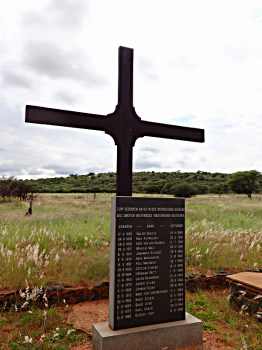The Andalusia Camp Cemetery in Jan Kempdorp: A Testament to History
The quiet town of Jan Kempdorp, nestled in the heart of South Africa's Northern Cape province, holds a piece of history that not many are aware of. This historical fragment speaks of war, displacement, and human endurance. The Andalusia Camp Cemetery stands as a testament to a group of Germans who were held in internment during a tumultuous period in world history. Today, visitors to the Jan Kempdorp cemetery can find graves of these Germans, solemn reminders of the times gone by.
The early 20th century witnessed global upheavals and changes. World War I and II reshaped political landscapes and left indelible marks on many nations. South Africa, far from the primary theaters of the world wars, still played a significant role in these events. The country held several internment camps for enemy nationals, and one such camp was the Andalusia Internment Camp.
Upon entering the Jan Kempdorp cemetery, one's eyes are instantly drawn to a line of graves, distinct from the others. These graves, marked with meticulous care, belong to the Germans who died at the Andalusia Internment Camp. Their final resting place has been preserved and maintained with respect, ensuring that their stories do not fade away.
At the heart of this row lies a poignant memorial cross, etched with the names of the Germans who lost their lives at the camp. This cross serves as a focal point for the cemetery, a silent monument representing memories and stories of those who are laid to rest there.
At least 30 Germans are buried in the Jan Kempdorp cemetery, each with their unique tale. While the reasons for their internment varied, they shared the common experience of living in confinement, far from their homeland, during a period marked by global unrest.
Though details about individual lives might be sparse, the presence of their graves in Jan Kempdorp hints at the diverse and intricate tapestry of histories that this small town encompasses. For many of these Germans, Andalusia Camp would have been a world away from anything familiar. The South African landscape, culture, and climate would have been strikingly different from what they knew.
The Andalusia Camp Cemetery in Jan Kempdorp stands as a poignant reminder of the intricate and interconnected nature of world history. Even in places that seem distant from the primary events of world wars, traces of these monumental conflicts can be found. The graves and the memorial cross at Jan Kempdorp serve as silent witnesses to the past, urging us to remember and reflect upon the stories they represent. They invite visitors to take a moment, pay their respects, and ponder on the myriad ways in which the threads of history intertwine.
Further Reading
For further insights into Andalusia, explore these resources:

